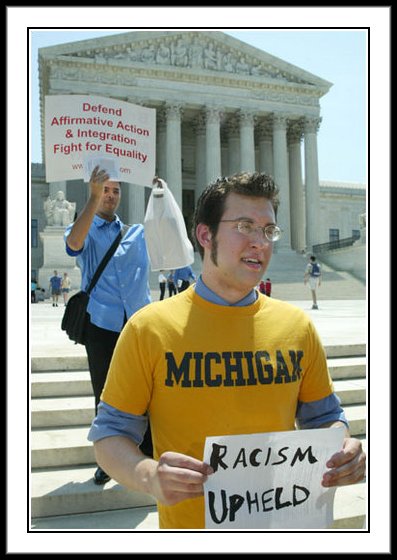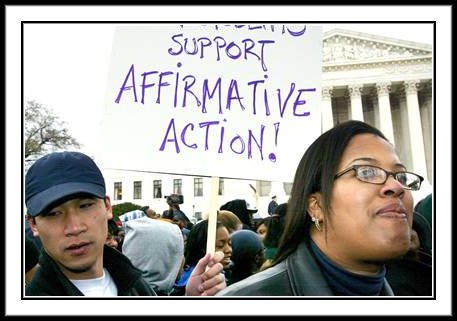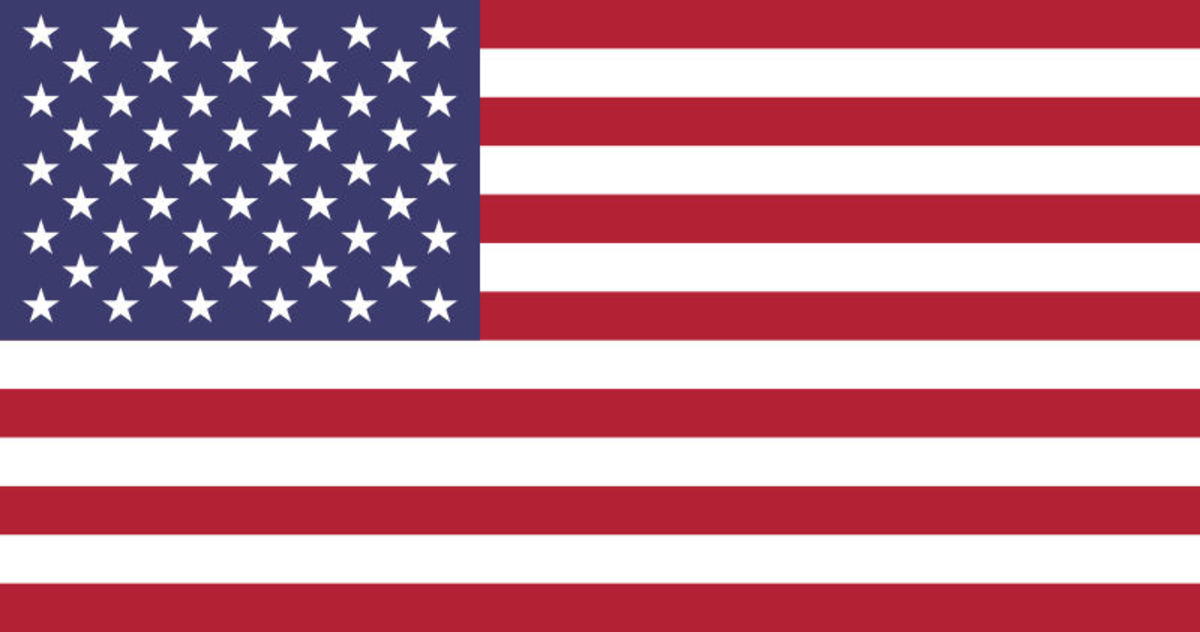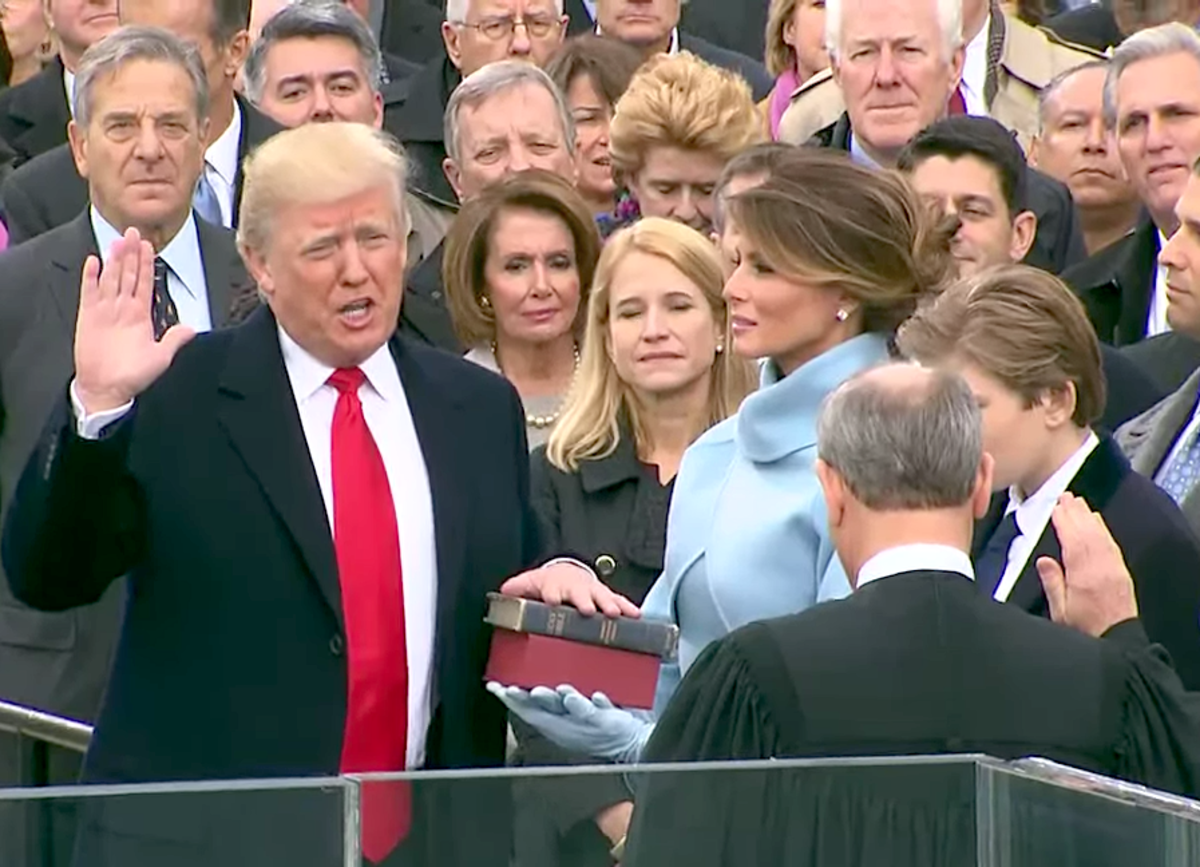The Roots of Affirmative Action



Affirmative Action
Most people assume Americas’ affirmative action policies began in the 1960’s during President John F. Kennedys’ administration. But the origins of affirmative action actually date back a century earlier in the 1860’s with the enactment of the 14th Amendment. That event set the foundations which were later to evolve into what we know today as affirmative action.
The 14th Amendment approved by Congress in 1866, states in part “All persons born or naturalized in the United States, and subject to the jurisdiction thereof, are citizens of the United States and of the state wherein they reside. No state shall make or enforce any law which shall abridge the privileges or immunities of citizens of the United States; nor shall any state deprive any person of life, liberty, or property, without due process of law; nor deny to any person within its jurisdiction the equal protection of the laws.”
In 1896, 65 years before the term “affirmative action” became commonplace, the Supreme Court made a ruling which could have blocked affirmative action from ever becoming national policy. It was determined decided in the famous “Plessy versus Ferguson” case the 14th Amendment did not prohibit a separate but equal society. In layman’s terms, blacks could be segregated from whites as long as services received were equal to those of whites.


Landmark Case
The landmark case arose from an incident in 1892 when authorities in Louisiana arrested Homer Plessy, a one-eighth black, for refusing to leave a whites-only railcar. When the Supreme Court deemed separate but equal accommodations wasn’t unconstitutional, it set off a flurry of segregationist policies by various states. These policies would later become known as “Jim Crow.”
In 1941, President Franklin D. Roosevelt signed Executive Order 8802 which prohibited defense companies with federal contracts from discriminatory practices in hiring and training. It was the first time federal law promoted equal opportunity, thus paving the way for affirmative action. And in1948, following in Roosevelt’s footsteps, President Harry S. Truman signed Executive Order 9981 prohibiting the Armed Forces from using segregationist policies.

Reverse Discrimination?
Today, affirmative action is widely practiced. But with tremendous strides made in civil rights, the need for it has been questioned. States such as California and others have even eliminated it.
So, what’s the current state of affirmative action? Ironically, affirmative action has frequently been accused of discriminating against whites, or what’s become known as “reverse discrimination.”
A good example of reverse discrimination was the 2009 landmark case known as “Ricci versus Destefano.” The case involved a group of white firefighters in New Haven, Conn. The firemen claimed they had been discriminated against in 2003 after passing a test at a 50% greater rate than blacks. Since performance on the test was the basis for promotion, none of the black firefighters could have been promoted had the city accepted the results. The City of New Haven subsequently decided to discard the test. That action, however, prevented whites eligible for promotion from advancing.
Was this reverse discrimination? Counsel for the firefighters argued before the Supreme Court that New Haven prematurely declared the exam unfit. Chief Justice John Roberts doubted New Haven would have chosen to discard the test had the outcomes been reversed.
During hearings Roberts asked the New Haven attorney “So, can you assure me that…if…black applicants…scored highest on this test in disproportionate numbers, and the city said…we think there should be more whites on the fire department, and so we’re going to throw the test out? The government of United States would adopt the same position?” The attorney failed to give a direct response.
In recent years, affirmative action has been hotly debated in the educational arena,particularly in race-based admissions policies at universities. In a 2003 ruling involving the University of Michigan, voters passed an amendment to the state constitution banning affirmative action. Two other states, California and Washington,also followed suit. Many Americans have since asked, “Is it time to end affirmative action?”
A panel of six experts argued that topic on “Intelligence Squared,” U.S.series, aprogram modeled on an oxford style debate. Three experts argued in favor of the question while three argued against. It was hosted by Robert Siegel, of National Public Radio's “All Things Considered” and the Intelligence Squared series.
In a vote prior to the debate, 44 percent of the audience opposed the motion, 34 percent supported it while 22 percent were undecided. After the debate, 55 percent were against it, 39 percent supported it and 6 percent were undecided.
The future of affirmative action policies in America has yet to be decided. The controversy has become personal to many. The Declaration of Independence clearly says all men are created equal, but morality and personal opinion can’t be legislated. It’s up to us as a nation and individuals to decide if we are all truly equal or need congressional legislation to make us that way.










